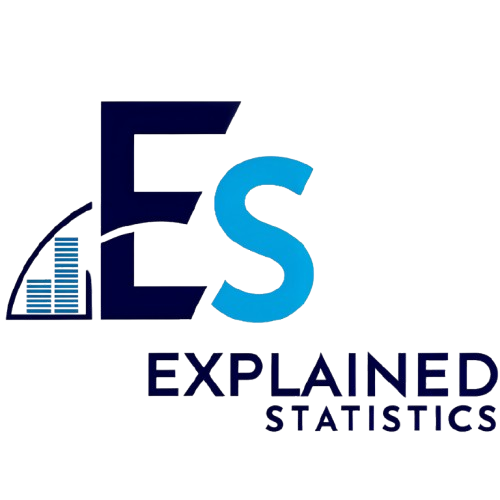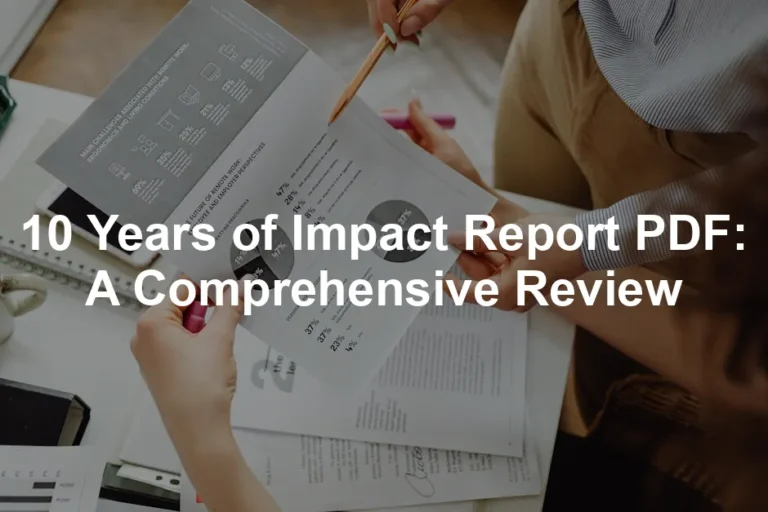Introduction
Statistics play a crucial role in the behavioral sciences. Whether it’s psychology, sociology, or education, statistics help researchers understand patterns, relationships, and trends. Without statistical knowledge, one might as well be trying to navigate a maze blindfolded. That’s where Frederick J. Gravetter and Larry B. Wallnau come in with their acclaimed textbook, “Essentials of Statistics for the Behavioral Sciences.” If you’re serious about mastering statistics, get your hands on the Essentials of Statistics for the Behavioral Sciences.
This book is not just a collection of formulas and numbers; it’s a gateway to understanding how statistics influence human behavior. It’s a key resource for students and professionals alike, guiding them through the complexities of data interpretation. With its engaging style and practical examples, it demystifies the often intimidating world of statistics.
Gravetter and Wallnau have evolved this book through multiple editions, ensuring it stays relevant in today’s fast-paced educational landscape. The 10th edition, for instance, incorporates the latest research findings and pedagogical techniques. This continuous evolution speaks volumes about its commitment to quality education.
Moreover, this textbook emphasizes learning through real-world applications. It doesn’t merely present statistics; it shows how these concepts are applied in real research scenarios. This practical focus is what makes the book stand out in the sea of statistical textbooks.
In an era where data drives decisions, mastering statistics is more crucial than ever. Gravetter and Wallnau’s work equips readers with the necessary tools to not just crunch numbers but also interpret their implications effectively. This book is essential for anyone wishing to navigate the behavioral sciences successfully. So, buckle up and get ready to explore the fascinating interplay of statistics and human behavior!

For a deeper understanding of the statistical concepts introduced in this book, check out statistics for the behavioral sciences.
Understanding the Authors and Their Contributions
Frederick J. Gravetter
Frederick J. Gravetter is a name synonymous with excellence in psychology and statistics. As a Professor Emeritus at The College at Brockport, SUNY, Gravetter has dedicated his career to unraveling the complexities of statistical analysis. With degrees in mathematics and psychology, he brings a unique perspective to the field.
Gravetter’s contributions extend beyond this textbook. He’s authored several influential works that have shaped the way statistics are taught in the behavioral sciences. His focus is always on clarity and applicability, ensuring that even those with limited mathematical backgrounds can grasp essential concepts. Gravetter’s writing style is approachable yet insightful, making complex topics accessible to a broad audience.
His influence is widely recognized in academic circles. Colleagues and students alike praise his ability to present statistical methods that empower individuals to become savvy consumers of information. This ability is especially important in today’s data-driven world, where interpretation can make or break research findings. Gravetter’s legacy lives on through his contributions, particularly in the realm of teaching statistics in a way that’s both engaging and informative.
With Gravetter at the helm, students are not just learning statistics; they are acquiring essential skills that will serve them throughout their academic and professional journeys. His work is a testament to the power of education in the behavioral sciences, and “Essentials of Statistics for the Behavioral Sciences” remains a cornerstone of that educational journey.

Larry B. Wallnau
Larry B. Wallnau is a prominent figure in the field of psychology and statistics. As a Professor Emeritus at The College at Brockport, SUNY, his career spans decades of dedicated teaching and research. Wallnau’s contributions to the field are significant, particularly in statistical methods for behavioral sciences. He has co-authored multiple editions of “Essentials of Statistics for the Behavioral Sciences,” enhancing the book’s clarity and relevance for students.
His partnership with Frederick J. Gravetter has been crucial in shaping educational resources that demystify complex statistical concepts. Their collaborative efforts have led to the development of a textbook that not only instructs but also engages students. This joint work emphasizes real-world applications, ensuring that learners can relate statistical theories to everyday situations. Wallnau’s expertise in biopsychology and statistical analysis has enriched the content, making it accessible to those with varying levels of mathematical background. His influence persists in the lives of countless students, empowering them to tackle statistics with confidence.
Overview of the Book
Key Features
“Essentials of Statistics for the Behavioral Sciences” stands out for its engaging approach to teaching statistics. The authors prioritize clarity, ensuring that readers grasp essential concepts without drowning in formulas. The book is structured to lead students through statistical principles in a logical and accessible manner.
One of the key features is the inclusion of learning aids. These aids are designed to reinforce understanding and retention. For instance, each chapter begins with a captivating example that sets the stage for the material. This method sparks curiosity and prepares students for what’s ahead. Real-world examples are interwoven throughout the text, showcasing how statistics apply in various fields, including psychology, sociology, and education.
The book also excels in providing numerous visual aids. Graphs, charts, and tables complement the text, making complex data more digestible. These visual elements are not just decorative; they serve as crucial tools for understanding statistical concepts. Additionally, practice problems at the end of each chapter challenge readers to apply what they’ve learned, solidifying their grasp on the material.
Furthermore, the clarity of explanations is a hallmark of this book. Wallnau and Gravetter have crafted their writing to be approachable, steering clear of jargon that could alienate students. This focus on straightforward language helps demystify statistics, transforming it from a daunting subject into an exciting exploration of data.

Editions and Updates
Over the years, “Essentials of Statistics for the Behavioral Sciences” has undergone several editions, each reflecting the latest advancements in research and pedagogy. The 10th edition, released recently, incorporates significant updates that address contemporary educational needs.
In this edition, the authors have refined explanations and added new examples to ensure relevance. Statistical methods have evolved, and the authors have made a concerted effort to include the latest practices and insights. This ensures that students are not only learning traditional methods but are also equipped with modern tools used in research today.
Moreover, the 10th edition emphasizes the importance of understanding statistical software. An appendix introduces students to popular software like SPSS Statistics Software, which is essential for conducting statistical analyses in real-world scenarios. This practical approach prepares students for the challenges they will face in their academic and professional careers.
The updates also include feedback from instructors and students, which has been invaluable in shaping the content. By actively listening to their audience, Wallnau and Gravetter have ensured that the textbook remains a vital resource for anyone aspiring to master statistics in the behavioral sciences.

Core Topics Covered in the Textbook
Introduction to Statistics
Statistics are the backbone of behavioral sciences. They help researchers make sense of complex data and extract meaningful insights. Simply put, statistics provide the tools to quantify, analyze, and interpret data related to human behavior. Whether it’s measuring the effectiveness of a therapy or understanding social trends, statistics are essential.
Understanding statistics is crucial for anyone working in psychology, sociology, or education. With a firm grasp of statistical concepts, professionals can make informed decisions, evaluate research findings critically, and contribute to evidence-based practice. This textbook emphasizes the importance of statistical literacy, making it accessible even for those who may not have a strong mathematical background.
Moreover, different types of data—nominal, ordinal, interval, and ratio—play a significant role in statistical analysis. Recognizing these distinctions helps researchers choose the right statistical methods for their studies. In essence, a strong foundation in statistics equips individuals with the skills to navigate the nuances of behavioral research.

Descriptive Statistics
Descriptive statistics turn raw data into understandable information. They summarize data sets, making it easier to interpret complex information at a glance. The core components of descriptive statistics are measures of central tendency and measures of variability.
Measures of central tendency include the mean, median, and mode. The mean is the average of a data set, calculated by adding all numbers and dividing by the total count. However, the mean can be skewed by extreme values. Enter the median, the middle value in a sorted list, which provides a better measure when dealing with outliers. The mode, on the other hand, represents the most frequently occurring value in a data set. Each measure offers unique insights, and understanding their differences is vital for accurate data interpretation.
Then we have the measures of variability, which include range, variance, and standard deviation. The range is the difference between the highest and lowest values, giving a quick snapshot of data spread. Variance takes it a step further by measuring how much individual data points differ from the mean. Standard deviation, the square root of variance, provides a more intuitive understanding of variability, indicating how much scores deviate from the average. Together, these measures give researchers a comprehensive view of data distribution, laying the groundwork for deeper analysis.

For a comprehensive guide on how descriptive statistics are applied in real-world scenarios, you may find valuable insights in descriptive statistics in manufacturing plant.
Inferential Statistics
Inferential statistics allow researchers to make predictions and generalizations about a population based on a sample. It’s all about hypothesis testing—a fancy term for determining whether there’s enough evidence to support a particular claim.
At the heart of hypothesis testing lies the null hypothesis, which posits that there is no effect or difference. Researchers aim to gather evidence to reject this hypothesis in favor of the alternative hypothesis. To do this, they often use tests such as t-tests and ANOVA (Analysis of Variance).
T-tests help compare means between two groups. For instance, researchers might want to know if a new therapy is more effective than an existing one. The t-test provides the statistical framework to determine whether any observed differences are significant. If you’re looking to sharpen your skills, consider getting a solid Study Guide for Statistics.
ANOVA expands this concept by comparing means across three or more groups. This is particularly useful when assessing the effects of different treatments or interventions in a study. By analyzing variance, ANOVA helps researchers discern whether group differences stem from the treatment or just random chance.
Understanding these inferential statistics techniques is essential for anyone involved in behavioral research. They provide the foundation for making informed conclusions and driving future research directions.

To explore common challenges associated with inferential statistics, consider reading about the problem with inferential statistics.
Correlation and Regression
Correlation coefficients measure the strength and direction of relationships between variables. Think of it as a friendship metric for data. A correlation coefficient ranges from -1 to 1. A value of 1 indicates a perfect positive correlation, where both variables move in the same direction. A value of -1 signifies a perfect negative correlation, where one variable increases while the other decreases. If you see a value around 0, it suggests no relationship at all—like two people at a party who have nothing in common.
Regression analysis takes this a step further. It’s like playing matchmaker for variables. It helps predict the value of one variable based on another. For example, in psychology, researchers might use regression to predict depression levels based on hours of sleep. This method not only identifies relationships but also quantifies them, offering insights into how changes in one variable can affect another.
In behavioral research, correlation and regression are invaluable. They help psychologists identify patterns in behavior, allowing for better understanding and treatment of mental health issues. For instance, a study might find a strong correlation between exercise frequency and reduced anxiety levels. With regression, researchers could predict how much anxiety might decrease with increased exercise. It’s a powerful tool for both research and practical application.

Nonparametric Statistics
Nonparametric statistics come into play when data doesn’t fit the usual assumptions of normality. It’s like the rebel of statistical methods. These methods are used when sample sizes are small, or data is ordinal rather than interval. When you can’t assume a bell curve, nonparametric tests step in, ready to save the day.
When should you use nonparametric methods? Well, if your data is skewed or contains outliers, traditional parametric tests might lead you astray. In such cases, opt for nonparametric tests. They’re more flexible and less sensitive to violations of assumptions.
Some common nonparametric tests relevant to behavioral sciences include the Mann-Whitney U test and the Kruskal-Wallis test. The Mann-Whitney U test compares differences between two independent groups, making it perfect for studies involving different treatment groups. The Kruskal-Wallis test can compare three or more groups, offering insights into how different conditions affect behavior without assuming normal distribution. These tests empower researchers to analyze data accurately, ensuring valid conclusions in behavioral research.

Learning Tools and Resources
MindTap Digital Learning
MindTap is an interactive digital learning platform that transforms the way students engage with statistical concepts. It’s not just a fancy eBook; it’s a comprehensive educational experience. With MindTap, students gain control over their learning journey, allowing them to progress at their own pace.
One standout feature is its interactive elements. These include videos, quizzes, and simulations that bring statistics to life. Instead of just reading about statistical concepts, students can visualize them, making understanding much easier. It’s like having a personal tutor available 24/7, ready to explain complex ideas in simple terms.
Assessments within MindTap are tailored to reinforce learning. They provide instant feedback, helping students identify areas where they might need extra practice. This feature is incredibly useful, as it allows learners to focus on their weaknesses and build confidence over time.
Another aspect is the personalized learning paths. MindTap adapts to each student’s progress, offering customized resources that target their specific needs. This approach ensures that students are not just memorizing formulas but truly grasping the concepts behind them.
For educators, MindTap simplifies course management. Instructors can track student progress and engagement, allowing for timely intervention if needed. This comprehensive tool enhances the overall learning experience, making statistics more accessible and enjoyable for everyone involved.
In the end, MindTap is more than just a resource; it’s a game-changer for mastering statistical concepts in the behavioral sciences. By combining interactive learning with personalized assessments, it sets students up for success in their academic journeys.

Supplemental Materials
“Essentials of Statistics for the Behavioral Sciences” is more than just a textbook; it’s a treasure trove of additional resources. These supplemental materials are designed to enhance your learning experience and ensure you grasp the intricate concepts of statistics.
One standout resource is the MindTap digital platform. This interactive learning tool offers personalized study paths, quizzes, and engaging content that make mastering statistics feel less like a chore and more like a fun challenge. With MindTap, you can track your progress and focus on areas needing improvement. It’s like having a personal tutor at your fingertips—minus the hourly fees!
Another valuable addition is the availability of study guides. These guides provide succinct summaries and practice problems that reinforce the material covered in the textbook. They are especially handy during exam prep, transforming overwhelming topics into bite-sized chunks that are easier to digest. If you want to go deeper into statistical methods, check out the Statistical Methods for Psychology Book.
Moreover, various online tools complement the learning process. Many websites offer interactive statistics calculators and visual aids, making it easier to understand complex data. These resources help demystify statistical concepts, allowing students to visualize what they are learning.
Together, these supplemental materials create a robust framework for learning statistics in the behavioral sciences. They ensure that students not only understand the theory but can also apply it effectively in real-world scenarios.

User Reviews and Reception
Customer Feedback
The reception of “Essentials of Statistics for the Behavioral Sciences” has been overwhelmingly positive. With a solid 4.4 out of 5 stars from over 460 ratings, students and educators alike appreciate the book’s clarity and practical approach. Users frequently commend its straightforward explanations. For instance, Anne noted it is “easy to follow” and packed with “learning checks and practice questions.” Similarly, Dyno Dave highlighted how the text simplifies a challenging subject, making it accessible to all.
However, not all feedback is glitter and gold. Some users have pointed out that certain sections could benefit from more in-depth explanations. A few educators feel that while the book is excellent for beginners, advanced students might find it lacking in depth for complex topics. This constructive criticism suggests that while the book serves its purpose well, there’s always room for growth.

Impact on Learning
This textbook has proven invaluable for many students grappling with the intricacies of statistics. Many reviews reflect on how it has transformed their understanding. Students have reported overcoming initial confusion and anxiety about the subject. The engaging examples and practical applications make statistical concepts more relatable and less daunting.
One recurring theme in the feedback is how the book helps students become more confident in their statistical abilities. By emphasizing understanding over rote memorization, it empowers students to think critically about data. This shift in mindset enables them to approach statistics not just as a requirement but as a tool for research and analysis.
The book’s user-friendly style fosters a deeper connection with the material. Students who once dreaded statistics now find themselves more engaged and willing to tackle complex problems. The positive impact on learning is evident, making this textbook a cornerstone resource in behavioral sciences education.

Conclusion
“Essentials of Statistics for the Behavioral Sciences” by Frederick J. Gravetter and Larry B. Wallnau holds significant importance in educational settings. Its engaging writing style and practical examples make statistics accessible, transforming a traditionally daunting subject into an enjoyable learning experience.
The comprehensive approach of the book, coupled with its supplemental materials, equips students with the necessary tools to understand and apply statistical concepts effectively. The continuous evolution of the text through various editions showcases its relevance and adaptability to modern educational needs.
For anyone venturing into the behavioral sciences, this textbook is not just a recommendation; it’s a vital resource. By mastering the principles outlined within its pages, students can confidently interpret data, conduct research, and ultimately contribute meaningfully to their fields. Investing in “Essentials of Statistics for the Behavioral Sciences” is an investment in your academic and professional future. Don’t miss out on this essential guide to statistical mastery!
FAQs
What is the main focus of “Essentials of Statistics for the Behavioral Sciences”?
The primary focus of the textbook is to provide a comprehensive introduction to statistical principles and practices specifically tailored for the behavioral sciences. It aims to foster a conceptual understanding of statistics rather than just rote memorization of formulas.
Who should use this textbook?
This textbook is ideally suited for students, educators, and professionals in psychology, sociology, and related fields. It’s designed for anyone looking to enhance their understanding of statistical methodologies and applications in the behavioral sciences.
How does this textbook differ from other statistics textbooks?
Unlike many traditional statistics textbooks, “Essentials of Statistics for the Behavioral Sciences” focuses on real-world applications and clarity of explanations. It emphasizes understanding concepts rather than mere calculation, making it more accessible for students with varying levels of mathematical background.
What supplementary materials are available for this textbook?
Supplementary materials include the MindTap digital platform, study guides, and various online tools. These resources enhance the learning experience by providing interactive content, practice problems, and visual aids that reinforce statistical concepts.
Where can I purchase or access this book?
You can purchase “Essentials of Statistics for the Behavioral Sciences” in various formats, including paperback and digital. Prices vary depending on the retailer, with options available on platforms such as Amazon, Chegg, and Cengage. Keep an eye out for digital rental options and used copies for more affordable choices!
Please let us know what you think about our content by leaving a comment down below!
Thank you for reading till here 🙂
All images from Pexels




